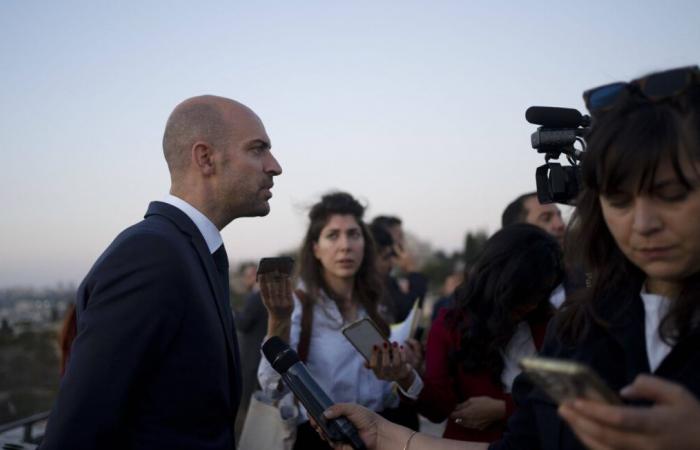
A diplomatic incident between France and Israel disrupted the visit to Jerusalem of French Foreign Minister Jean-Noël Barrot on Thursday. Israeli police officers entered “armed” and “without authorization”, according to him, on a religious site belonging to France, L’Eléona. Before arresting two French gendarmes on site.
This incident echoes the anger of Jacques Chirac – “This is not a method!” This is a provocation. » – faced with the presence of armed men within the church, during a trip in 1996. And another diplomatic incident, with Emmanuel Macron, for the same reasons, in 2020. Legal opinions are divided on the fact that these sites are “diplomatic holdings”, in the same way as embassies for example. On the other hand, the arrest of diplomatic agents is prohibited by international law.
But what exactly are these four national domains belonging to France? These sites are managed by the French Consulate General in Jerusalem. To understand their existence, we have to go back very far in history. These four holy places were given to France in the 19th century, either by the leaders of the time, or after acquisition by private figures, who then handed them back to France. Their session has never been questioned, whether by the Ottoman Empire, the British protectorate, Israel or the Palestinian Authority.
The Eleona
Located at the top of the Mount of Olives, the Eléona includes in the basement the so-called grotto of the Father, refuge of Christ in Jerusalem and place of teaching of the Father to the disciples. The site was bought by the Princess de la Tour d'Auvergne who had a cloister built there, made by Viollet-le-Duc, to frame the cave. She subsequently donated it to France.
Abou Gosh
This old crusader commandery with church and crypt was built in the 12th century by the knights of Saint-Jean the Hospitaller. It was abandoned to the Muslims in 1187. Seven centuries later, the Ottoman Empire gave it to France, in compensation for its loss of the Saint-George church in Lydda, which had been seized by the Orthodox Greeks in 1871.
The Tomb of the Kings
This site refers to the first kings of Judea. For a long time, it was assumed that this tomb was their mausoleum. It is in fact the tomb of Princess Hélène of Adiabene, whose sarcophagus is in the Louvre. The site, excavated in 1863 by French archaeologists, was acquired by the Pereire brothers, bankers of the Second Empire, who gave it to France in 1886.
The domain of Sainte-Anne
This last place is considered to be the house of the parents of the Virgin Mary and as that of the pool of Bethesda where, according to the Gospels, Christ healed a paralytic. In 1856, it was offered to Napoleon III by the Sultan, in gratitude for his support of the Ottoman Empire during the Crimean War.





